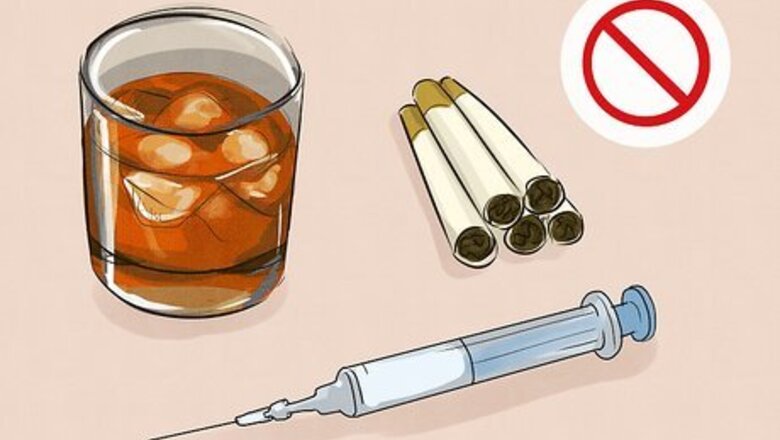
views
- Try having sex 3-4 days before and after ovulation and having deeper penetrative sex, although there's no guarantee you'll conceive a boy this way.
- Sperm separation has a roughly 75% chance of helping you predict the sex of your child, and it’ll cost up to $1,500.
- IVF treatment with genetic testing can determine the sex of a fertilized egg with 99% accuracy, but it’s the priciest option at up to $20,000.
Experimental Natural Methods

Take care of your body to maintain high-quality sperm. It's thought that if you increase the overall quality of sperm, you can raise the odds that a male sperm will reach the egg before a female sperm can. Keep in mind that some studies have shown this isn’t true. However, it won't hurt to try. Don't smoke or drink. Men who smoke and drink heavily are more likely to have low sperm count. If you're having a hard time quitting, talk to your doctor. Don't take illegal drugs, as they can slow sperm production. Lose weight if you’re overweight. Studies show that a man’s sperm count and quality are lowered if you’re obese.
Have sex 3-4 days before or after ovulation. In general, aim to have sex in the narrow window starting 3-4 days before ovulation, or 3-4 days after ovulation. During this time, conceiving a boy is more likely. It’s thought that there are higher levels of hormones that favor female sperm during peak fertility, which would explain why humans are slightly more likely to have girl in the first place. To find your ovulation date, calculate the day that is about 2 weeks before your next expected period. You can also use an ovulation kit. This is the cornerstone of the Babydust method. Per the Babydust method, your luteinizing hormones are highest in the days before ovulation. These hormones are thought to be the main factor in whether you have a boy or not.

Cut back on excess calcium and magnesium. Some people claim to have gotten pregnant with a boy by changing their diet. To try this, avoid eating foods with a lot of calcium and magnesium. Minimize the amount of milk, cheese, and yogurt you consume. There’s some tiny evidence that mothers who consume excessive calcium and magnesium will increase the odds they give birth to a girl. Consult your doctor before making major changes to your diet, and do not intentionally malnourish yourself.
Eat whenever you feel hungry and don’t count calories. It’s possible that male sperm require a little more energy than their female counterparts. A few studies suggest that women who eat more calories than they strictly need are more likely to give birth to a boy. Don’t risk your health and talk to your doctor before making any dietary changes, but eating plenty of food may help. You need about 1,800 calories a day in the first trimester, 2,200 calories during the second trimester, and 2,400 calories a day during the third trimester.

Reduce the amount of stress you experience during pregnancy. Some research suggests that the less stress you experience during pregnancy, the higher the chances are of having a boy. Follow all of your doctor’s instructions when it comes to prenatal care, take time off when you need it, and avoid stressful activities. You may just tilt the odds in your favor. Pregnancy conditions, such as pre-eclampsia, are also associated with higher rates of female birth. Since stress is a major risk factor for many of these conditions, avoiding it will increase the odds you give birth to a boy.
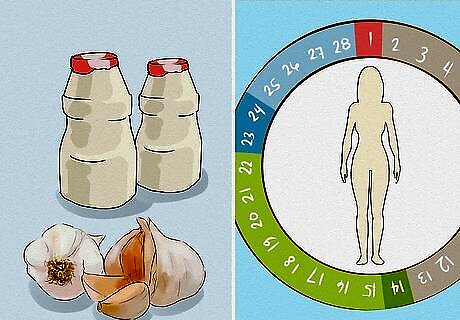
Try the Shettles method to increase the odds of having a boy. The Shettles method, named after Dr. Landrum Shettles, was developed around 1960s. It’s based on the idea that the male sperm are distinct from female sperm in terms of their shape and speed, and that by changing the way you have sex you can improve the pH of the vagina to give male sperm an advantage. It’s been mostly disproven over the years, but some couples swear by its efficacy. Here’s how it works: Have sex as close to ovulation as possible. Have deep, penetrative sex and have the man thrust as deeply inside of the vagina as possible at the moment of ejaculation. Having sex in the doggy style or reverse cowgirl position may help. Increase the alkalinity of your vagina by keeping your vagina clean, eating plenty of garlic, and taking probiotics if your doctor thinks it’s appropriate. Have the woman orgasm before the man.
Sperm Separation

Know that sperm separation has a roughly 75% success rate. The Ericsson method, also known as the MicroSort method, is the only medically-recognized option outside of IVF when it comes to sex selection from sperm. Sperm separation may not be as consistent as IVF, but it’s a lot cheaper and a lot less invasive. Sperm separation works by spinning sperm at a high speed through a fluid and light filter. In theory, this should split up the male and female sperm. Sperm sorting costs around $600-1,200 per attempt, while IVF can run $15,000-20,000. Most major universities have a MicroSorting-style service in their family planning and research department. Alternatively, you can travel to Mexico, Malaysia, Cyprus, Japan, Cambodia, or Thailand to find a clinic (these countries have lax gender selection laws).
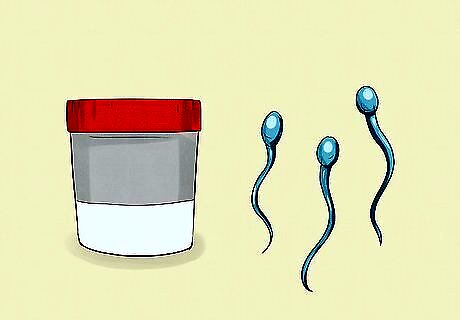
Visit the clinic to give a sperm sample and process the sperm. Upon arriving at the clinic on the day of the female partner's ovulation, the male partner gives a sperm sample. Generally, a man's sperm count is highest after 2-5 days without ejaculation, so you may be asked by the clinic to abstain from any sexual activity for about 48 hours before your appointment. Once you’ve provided a sample, the sperm is placed in a vial with a protein (normally albumin) and separated to pull the male sperm apart from the female sperm.

Undergo artificial insemination. To try for a male child, staff at the clinic will take a sample of sperm from the bottom of the vial of albumin and artificially inseminate the mother with this sperm. At this, point, if everything goes according to plan, the female partner will conceive. As with sexual intercourse, however, pregnancy is not guaranteed from a single exposure to sperm. There are several different methods of artificial insemination in use, but the most common is Intra Uterine Insemination (IUI). In this method, sperm are injected via a catheter directly into the uterus. You’ll need to wait at least 2 weeks before you can take an at-home pregnancy test and confirm you’re pregnant.
IVF
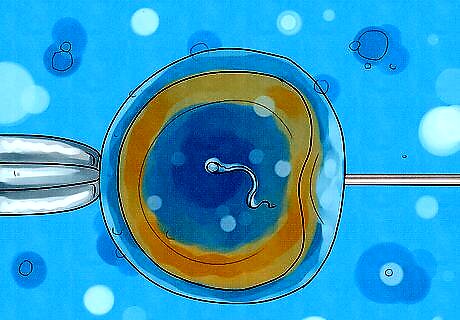
Find a hospital or clinic that performs IVF and PGD. Preimplantation Genetic Diagnosis (PGD) is a medical process by which an embryo's genetic information is analyzed before implantation in the uterus. It can also be used to determine the sex of the baby. If you're interested in pursuing this process, start by contacting a clinic near you that performs this type of procedure. PGD coupled with In-Vitro Fertilization (IVF) is one of the only ways to choose a baby's sex with absolute certainty. It has a near 99.99% success rate. However, it's also one of the most expensive, resource-intensive methods available, and it may cost up to $20,000. As an alternative to PGD, you may come across clinics offering PGT-A. This is identical to PGD, although it doesn’t involve genetic testing for diseases.
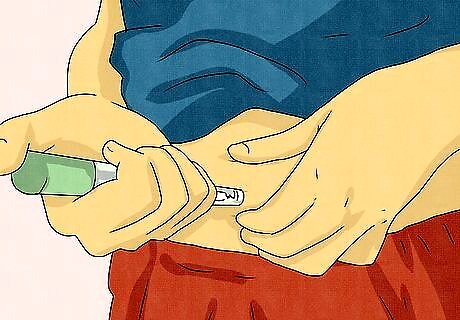
Undergo fertility treatments at the clinic. If the clinic agrees to perform this procedure, the female partner will probably need to begin preparing to donate eggs several weeks to a month in advance. Generally, women undergoing PGD and IVF are given fertility drugs to stimulate the ovaries to release more mature eggs. Usually, fertility drugs are taken for about two weeks via pill or injection. Side effects for common fertility drugs are usually mild and can include hot flashes, nausea, bloating, headache, and blurred vision. Some IVF clinics in the United States will not agree to sort for gender unless the parents have a specific reason (they want a girl and have 3 boys, women in the family history have genetic diseases, etc.).
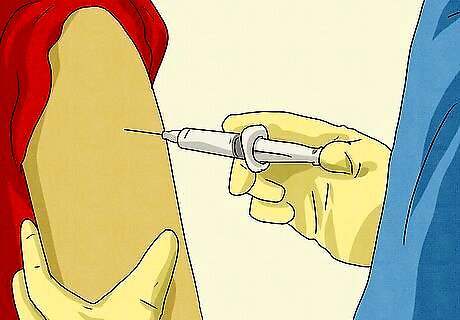
Receive hormone injections and follow your doctor’s instructions. In addition to taking fertility drugs, women who intend to donate eggs usually also receive a series of daily hormone injections. These injections further stimulate the ovaries to release more mature eggs. Some women have strong side effects from these hormones, so first-timers are generally monitored carefully to ensure that the process is proceeding smoothly. You may also be required to take progesterone, a hormone that thickens the uterine lining in preparation for IVF.
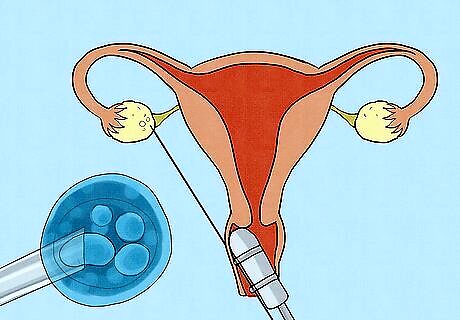
Donate your eggs to be fertilized. As the woman’s body is stimulated to release more eggs, regular ultrasound tests are used to determine when the eggs are ready to be donated. When the eggs are fully mature, there is a simple, minimally-invasive surgical procedure to remove the eggs. Most women are able to resume normal activities within a day or so of this procedure, so don’t worry. You’ll be put under sedation for this procedure. It might be a little uncomfortable, but it shouldn’t be anything too intense.

Allow the eggs to be fertilized. If the male partner does not already have a stored sperm sample ready to use, he provides it when the eggs are ready. The male partner’s sperm is processed to isolate the healthiest, highest-quality sperm, and combined with the eggs. Within about a day, the eggs are checked to see whether or not they have been fertilized. As with all sperm donations, the man will to abstain from ejaculating for about 48 hours before giving his sperm donation.
Allow the embryo to undergo a biopsy. After the embryos have grown for several days, a doctor removes several cells from each for testing and analysis. DNA is removed from each cell sample and copied via a process called the Polymerase Chain Reaction (PCR). This DNA is then analyzed to determine the embryo's genetic profile, including the sex of the child that could potentially grow from the embryo. Don’t worry about the biopsy harming the fertilized egg. Research shows the egg isn’t damaged by the process.

Make a decision based on the results of the biopsy test. After the cells from each embryo have been analyzed, you are notified which embryos are male and which are female, in addition to any other pressing information (such as the presence of genetic diseases).
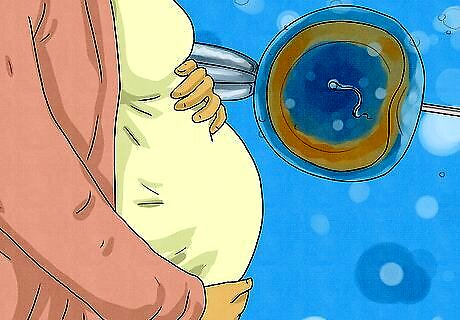
Undergo the implementation process. Once you've chosen which embryos you'd like to attempt pregnancy with, the doctors will insert the embryos into your uterus. Usually, only one or two embryos are transferred at a time. During a successful attempt, one or more embryos attach to the uterine wall and pregnancy continues as normal. In two weeks, take a pregnancy test to see whether or not the procedure was a success. Don't be deterred by one unsuccessful IVF attempt. Generally, most women have a per-cycle success rate of about 20-25%. Success rates of 40% or higher are considered quite rare. It's often necessary for perfectly healthy couples to have to undergo multiple rounds of PGD and IVF to achieve their desired pregnancy. If you've failed a cycle, ask your doctor why they think the transfer didn't work, what they would want to change next time, and if there's anything you can do to increase your chances of success.




















Comments
0 comment